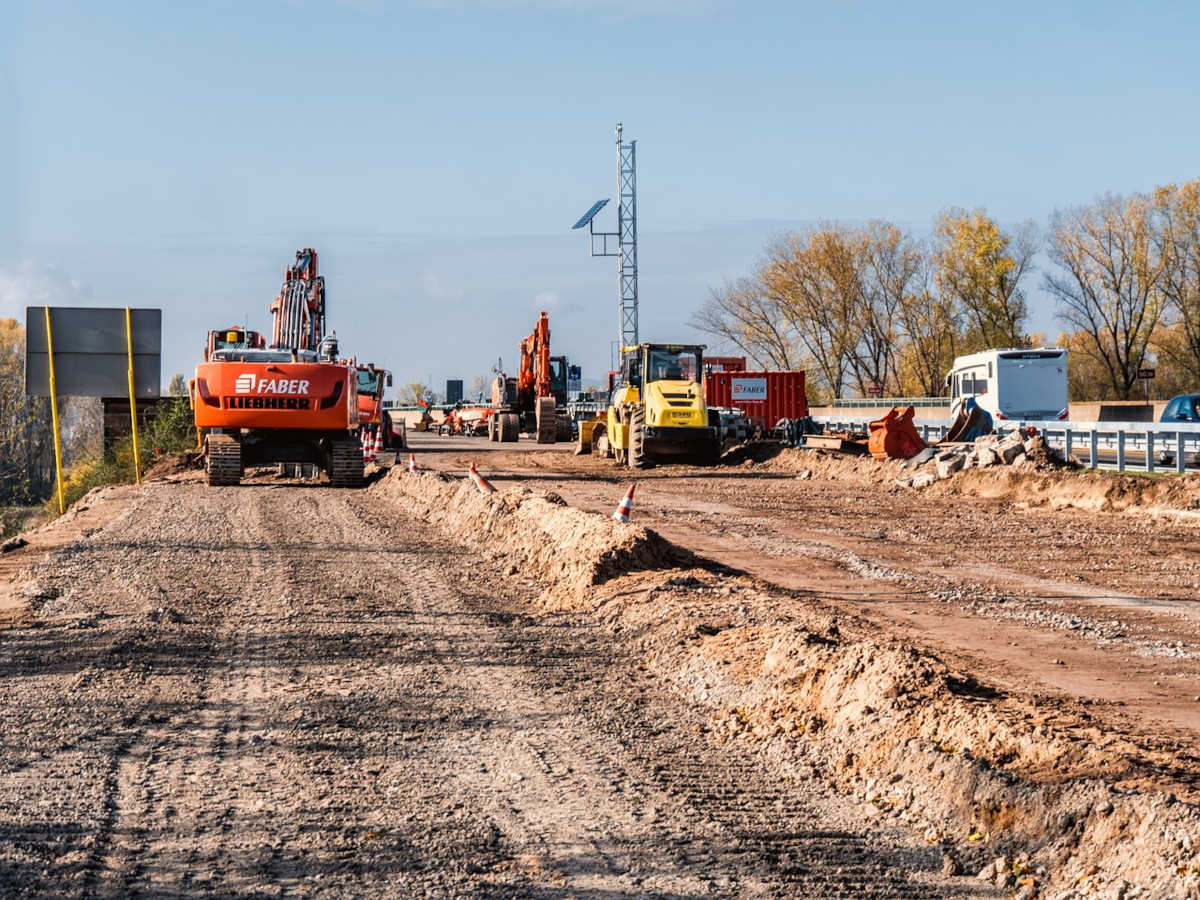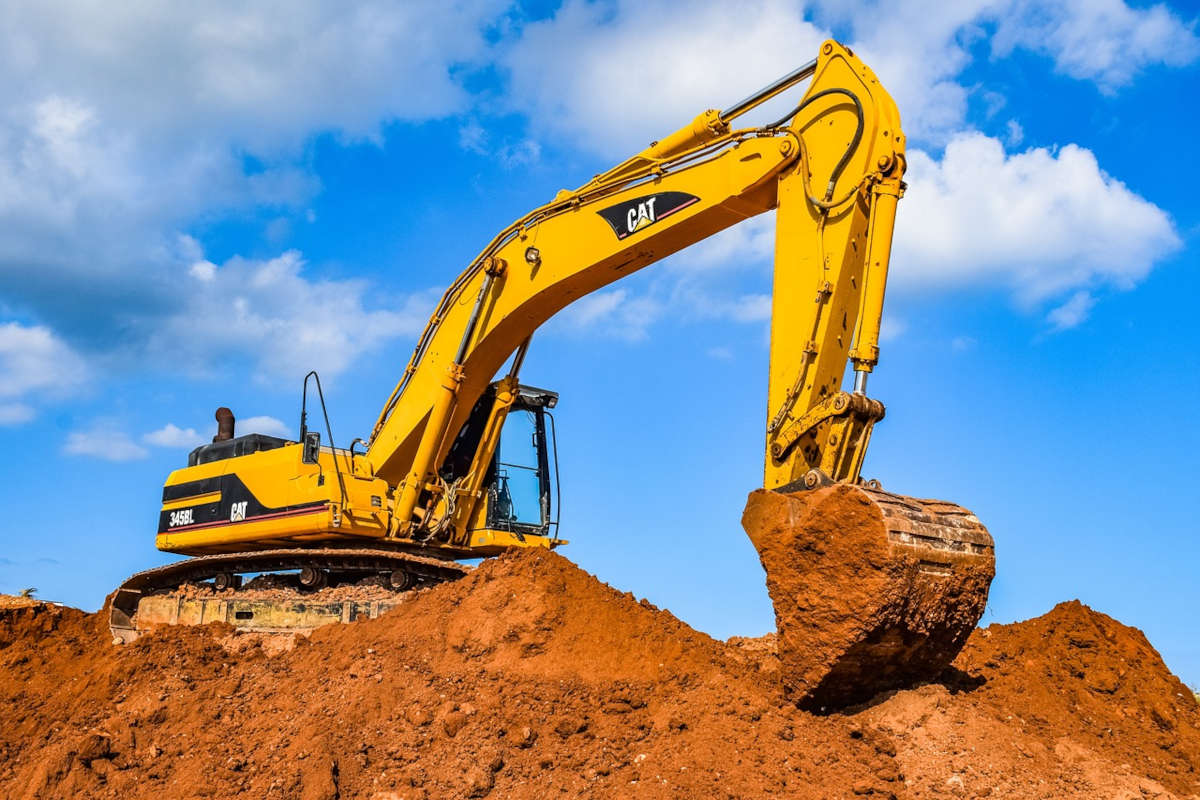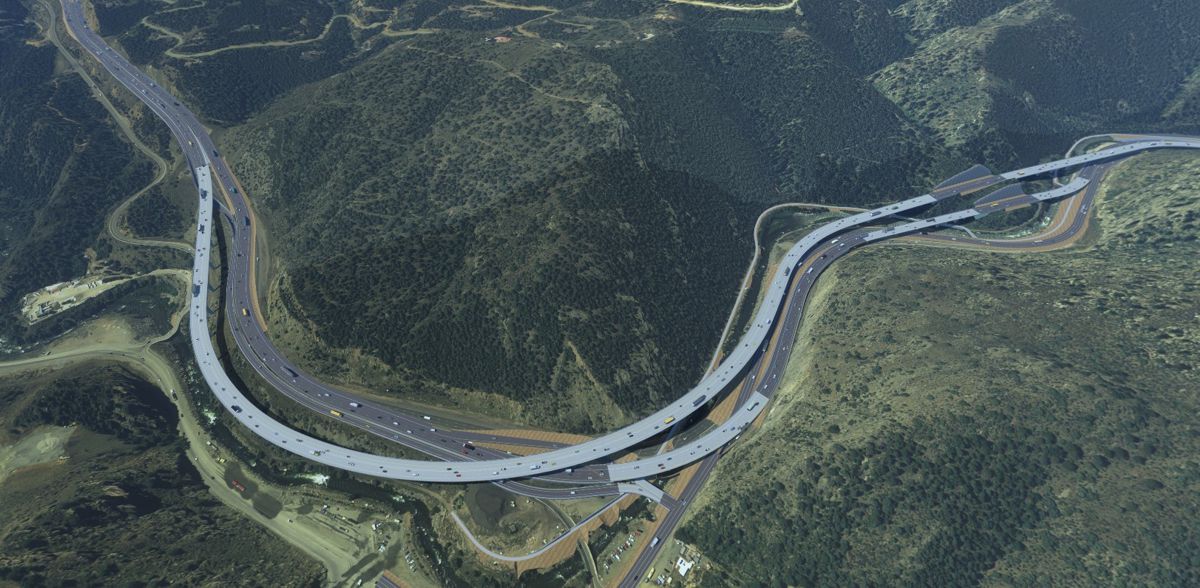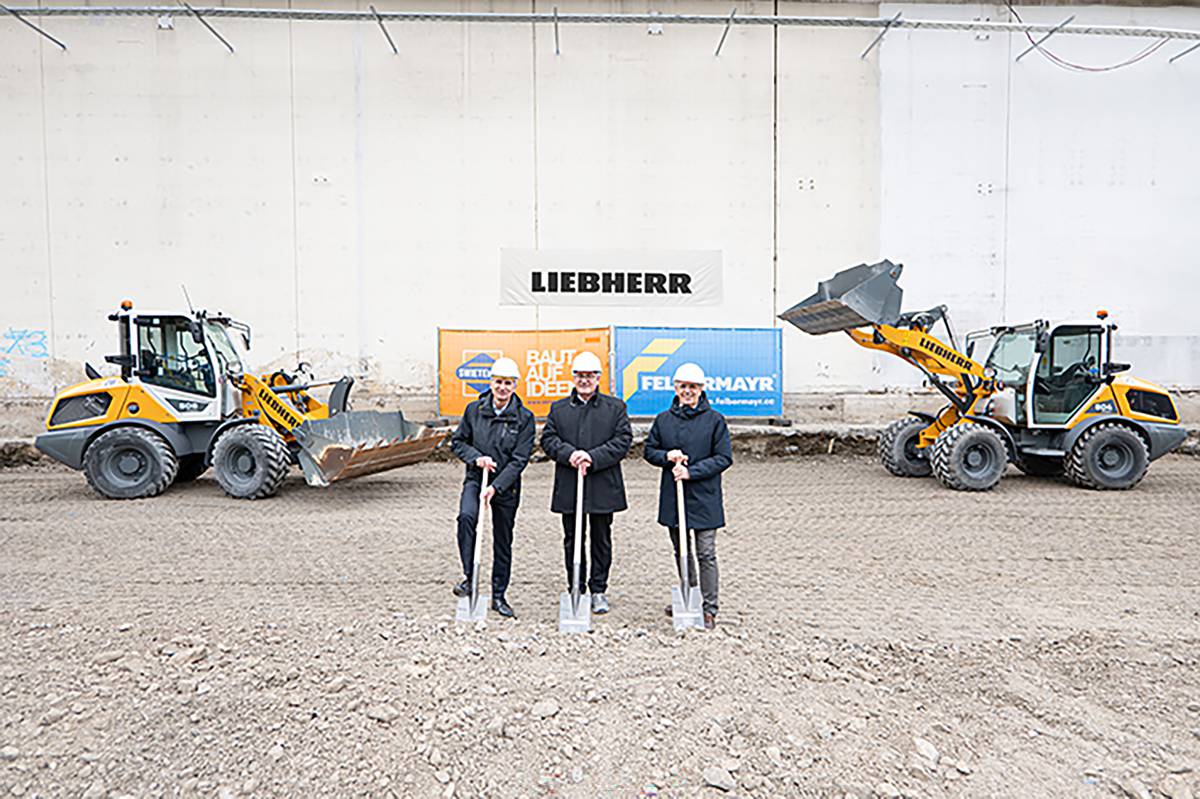Excavators: The Backbone Of Modern Road Construction Projects
Road construction plays a crucial role in infrastructure development. Its most modern iterations require advanced, heavy-duty machinery to ensure efficiency and precision, whether building new highways, widening existing roads, or repairing damaged ones.
Among the heavy equipment used in construction projects, one stands out the most—excavators, the backbone of modern road construction.

An excavator is a construction machine designed for digging, earthmoving, and other critical tasks involved in modern road construction. It’s equipped with a boom, an arm, a hydraulic system, and a bucket.
These components have gone a long way from crude maneuvering, but they still work as follows:
- The boom connects the machine’s arm to its body.
- The arm, or dipper, allows for reaching different heights and depths.
- The hydraulic system provides power and control.
- The bucket is an attachment at the end of the arm.
Excavators come in different types and sizes to address specific job requirements. The latter is often determined by weight, usually measured in metric tons. There are also different brands such as Caterpillar, Komatsu, and Kato excavators.
Click here for excavation services for road construction projects involving these remarkable machines. In the meantime, this article will let you explore the role excavators play in modern road construction projects. This includes their functionalities, types, and the specific tasks they perform on construction sites.

What Are The Uses Of Excavators In Modern Road Construction?
Excavators provide much of the hard muscle needed in road development projects. Their versatility contributes to the overall efficiency and progress of modern road construction.
Here are some of the critical functions of excavators in road construction:
- Earthwork And Excavation: Excavators are primarily used for digging and excavating soil, rocks, and other materials from the ground. They can remove large volumes of earth quickly and efficiently, creating a trench or foundation for road construction within minutes.
- Trenching And Drainage: Excavators are used to dig trenches for drainage systems, including stormwater drains, culverts, and underground pipes. They can excavate and shape channels to facilitate proper water flow and prevent flooding or waterlogging issues in road construction.
- Clearing And Grubbing: Site workers can use them to clear vegetation, trees, and other obstructions from the construction site. They can remove stumps, rocks, and debris to prepare the ground for road development and maintenance activities.
- Grading And Levelling: Equipped with grading attachments, such as blades or buckets with grading teeth, these machines can level and grade the roadbed. They can spread and distribute materials like soil, gravel, or asphalt evenly, ensuring a smooth and properly aligned road surface.
- Material Handling: Excavators can lift and move heavy materials required for road construction, such as concrete pipes, precast components, and large construction equipment. They can load and unload materials efficiently, improving productivity and reducing manual labour.
- Demolition: In cases where existing structures or buildings need to be demolished to make way for road construction, excavators are used to tear down and remove debris. They can handle various demolition tasks, such as tearing concrete, removing walls, and clearing the site.
- Utility Work: Excavators are involved in installing and maintaining utilities alongside roads, such as water and sewage pipelines, electrical cables, and telecommunications infrastructure. They can dig trenches for utility lines and assist in placing and repairing these systems.
- Slope Stabilization: Excavators can create slopes and embankments along roads for stability and erosion control. They can shape the terrain, cut and fill slopes, and build retaining walls to provide support and prevent soil erosion.
These are some of the primary functions of excavators in modern road construction. Excavators are highly versatile machines that contribute to various stages of the construction process, enhancing efficiency and productivity on strict timetables.

What Are The Different Types Of Excavators And Their Functions?
There are several different types of excavators, each designed for specific applications and functions in construction projects. Below are some you might want to know and what they can do:
1. Crawler Excavators
Crawlers are the most common type of excavator used in road construction. Unlike others that run on wheels, crawler excavators use two caterpillar-like tracks to move back and forth. This design offers several advantages:
- Stability: The tracked undercarriage provides stability and traction, allowing the excavator to navigate challenging terrains, including soft or uneven surfaces.
- Maneuverability: The crawler’s tracks enable it to move smoothly and precisely in tight spaces and restricted job sites, allowing it to rotate 360 degrees in place.
- Traction: The tracks offer excellent traction, which is particularly beneficial when working on slippery or inclined surfaces, such as slopes or muddy areas.
- Weight distribution: These tracks help distribute the machine’s weight, reducing the ground pressure exerted by the excavator and the risk of sinking into soft ground.
However, these caterpillar-like tracks make crawler excavators slower than other wheeled machines. As such, they are commonly used in large-scale construction projects, such as road and infrastructure development and mining. Their robust design, stability, and mobility make them essential tools for efficient and productive earthmoving operations.
2. Wheeled Excavators
Wheeled excavators are similar to crawlers in terms of size and appearance. However, they run on wheels instead of caterpillar-like tracks—hence the name. This makes them faster and allows them to move easier on asphalt, concrete, and other flat surfaces.
Below are some features of these machines:
- Mobility: Wheeled excavators can travel at higher speeds compared to crawler excavators. This makes them highly suitable for projects that require frequent relocation.
- Manoeuvrability: With their four wheels, these excavators offer superb manoeuvrability, allowing them to navigate tight spaces and confined work areas easily.
- Versatility: Wheeled excavators are versatile machines suitable for various applications, such as digging, trenching, loading, material handling, and light demolition.
- Stability: They may not provide the same level of stability as crawlers on rough or soft terrain. But they’re exceptionally stable during operation.
Wheeled excavators may have limitations when operating in challenging terrains compared to crawler excavators. However, their mobility, manoeuvrability, versatility, and stability make them valuable assets in many construction projects.
3. Mini Excavators
A mini excavator, or a mini digger, is a small excavator designed to perform light-moderate excavation tasks. They typically weigh between 1-6 metric tons and are known for their compact size and exceptional manoeuvrability.
Here are some features of mini excavators:
- Compactness: This allows them to access tight spaces and navigate through narrow pathways, making them suitable for projects with limited working areas.
- Versatility: Mini excavators are versatile machines. They can be equipped with buckets for digging, hydraulic breakers for light demolition, and augers for drilling holes.
- Manoeuvrability: Mini excavators are highly manoeuvrable, allowing them to work efficiently in crowded areas or near obstacles without damaging surrounding objects.
- Digging power: Mini excavators are smaller but possess significant digging power, allowing them to excavate soil, dig trenches, and perform other tasks efficiently.
- Ease of transportation: Mini excavators can be loaded onto trailers or trucks, allowing for convenient movement between job sites.
- Operator comfort: Mini excavators feature ergonomic controls, adjustable seating, and improved visibility, ensuring operators are comfortable while working.
- Reduced environmental impact: Mini excavators are equipped with fuel-efficient engines, reducing ground pressure and minimizing potential damage to the work area.
Due to their versatility, manoeuvrability, and compact size, mini excavators are popular choices in a wide range of applications. These include residential construction, landscaping, utility installations, trenching, and small-scale road development projects.
4. Long-Reach Excavators
As its name implies, long-reach excavators feature a long arm and a boom section. They allow the machine to operate and access hard-to-reach areas. This extendable arm can stretch up to 100 feet vertically or horizontally.
Aside from extended reach, below are some notable features of long-reach excavators:
- Increased digging depth: The excavator’s extended boom and arm enable them to reach greater depths, making them suitable for excavation projects that require digging deep trenches, pits, or foundations.
- Enhanced vertical and horizontal reach: Long-reach excavators excel in applications that require working over obstacles or bodies of water. They can reach across barriers while maintaining stability and providing a safe working environment.
- Versatility: Long-reach excavators are commonly employed in projects involving dredging, river or canal maintenance, slope shaping, and deep excavation.
- Stability and balance: Long-reach excavators often have an additional counterweight to offset the weight of the long boom and arm. This ensures stability and balance during operation, even when working at the machine’s maximum reach.
Long-reach excavators are essential in projects that require extended reach, such as deep excavation and dredging. Their specialized design makes them valuable tools for completing tasks that standard excavators cannot reach.
5. Dragline Excavators
Dragline excavators operate in a different way compared to other types. They use a hoist-rope system attached to a bucket through a coupler. The other side is fixed to a dragline, which runs from the cab to the bucket.
Here are some key features and characteristics of dragline excavators:
- Long boom and cable system: The boom is mounted on a large rotating platform called the revolving frame. Meanwhile, the cable system allows the operator to raise or lower the bucket and swing it to different positions for excavation.
- Large excavation capacity: Dragline excavators are known for their impressive excavation capacities. They can handle massive volumes of earth, rock, and other materials in a single scoop, making them highly efficient for bulk excavation.
- Deep excavation: These excavators are particularly effective for deep excavation projects. The long boom enables them to reach significant depths, making them suitable for mining minerals, digging deep trenches, and creating large open-pit mines.
- Crawling mechanism: They often have a crawling mechanism on their lower section to move the machine across the work site. This consists of large tracks or crawler shoes that provide stability and mobility on rough terrain.
- High lifting capacity: These machines are designed to have substantial lifting capacities. They can lift and move heavy loads, including overburden (topsoil and rocks) in mining operations or other large objects encountered during excavation.
Dragline excavators play a vital role in infrastructure projects requiring extensive excavation and material handling. Their impressive size and capacity make them essential tools for extracting minerals and performing large-scale excavation tasks.

What Are The Common Excavator Attachments?
Excavators can be equipped with various attachments to perform a wide range of tasks. Some common ones include the following:
- Buckets: These are used for excavation, loading, and material handling tasks.
- Hydraulic breakers: These break and demolish concrete structures, rocks, or hard surfaces.
- Augers: These are used for drilling holes in the ground. They’re essential for fence post installation, foundation piling, or utility pole placement.
- Grapples: People use them to handle and sort materials, such as logs, rocks, debris, or scrap.
- Rippers: These are used for breaking up hard surfaces, compacted soil, or frozen ground.
- Tilt rotators: These advanced attachments provide 360-degree rotation to the excavator’s other attachments, allowing the operator to position them at different angles.
- Compactors: As the name implies, these are used to compact gravel, soil, and asphalt surfaces. That helps ensure a stable and durable roadbed.
These are some of the most common excavator attachments used in different industries. The choice of attachment depends on the task, terrain conditions, and project requirements.

Excavator Technology Advancements In Modern Road Construction
Excavator technology has evolved significantly over the years, incorporating advanced features and innovations to enhance productivity and efficiency in road projects. Below are some notable ones:
GPS And Telematics Integration
Excavators now integrate GPS and telematics systems, allowing for precise positioning, navigation, and monitoring of the machine’s movements. This technology enables operators to work more accurately, follow design plans precisely, and optimize productivity.
Intelligent Machine Control
Some excavators have smart control systems that use advanced sensors and automation to enhance the machine’s precision and efficiency. These systems enable semi-autonomous or fully autonomous operation, reducing human error.
Fuel Efficiency And Emissions Reduction
Manufacturers have made significant strides in improving the fuel efficiency of excavators while reducing emissions. Engine technologies contribute to a greener and more sustainable construction industry.
Enhanced Operator Comfort And Safety
Modern excavators feature ergonomic operator cabins with improved visibility, reduced noise, and enhanced comfort. These promote the well-being of the operators and those working in the vicinity.
Attachment Versatility
Excavators now offer enhanced attachment compatibility, allowing quick and easy interchangeability of various tools. This versatility enables excavators to perform multiple tasks, reducing the need for additional machinery on the construction site.
These advancements in excavator technology have revolutionized road construction projects, improving accuracy, productivity, and safety. As it continues to evolve, you may expect further innovations that’ll enhance the capabilities of these machines, making them even more efficient and effective in road construction applications.

A Prime Investment
Excavators are undoubtedly the backbone of modern road construction projects. With their versatility, they contribute significantly to the efficiency, precision, and safety of road development.
From digging and grading to material handling and slope stabilization, excavators perform crucial tasks that lay the foundation for well-built and durable roads. As technology evolves, expect excavators to become even more efficient and integrated into the evolving landscape of construction.
















